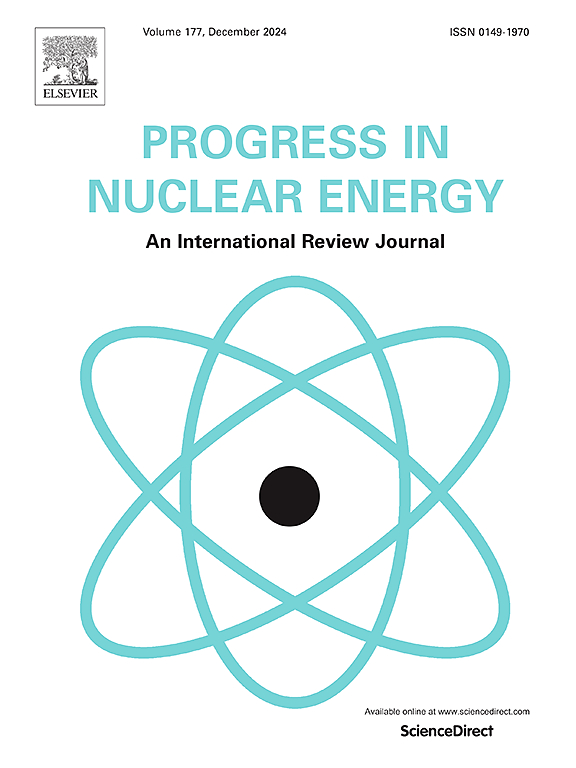Experimental research on the two-phase turbulent mixing between rod bundle subchannels with spacer grid
IF 3.3
3区 工程技术
Q1 NUCLEAR SCIENCE & TECHNOLOGY
引用次数: 0
Abstract
The turbulent mixing between rod bundle subchannels is a crucial phenomenon affecting the calculation accuracy of thermal-hydraulic parameters in reactor cores. Currently, studies on two-phase turbulent mixing mainly focused on the effects of flow regimes, rod bundle arrangement and gap spacing, etc., but seldom addressed the influence of spacer grid. In this paper, experiment of the two-phase turbulent mixing characteristics between rod bundle subchannels with spacer grid was conducted with tracer and visualization method. In the low void fraction region, the effects of spacer grid in enhancing phasic turbulent mixing was confirmed, but the enhancement would tend to disappear for large void fraction. It was also found that the effects of spacer grid on gas phase turbulent mixing were larger than that of liquid phase. Studies showed that with the increase of void fraction in the region of 0–0.65, the dimensionless liquid phase turbulent mixing rate was almost constant but decreased slightly for void fraction greater than 0.5, while the dimensionless gas phase turbulent mixing rate would increase. Existing models were also assessed with the experimental data, and it was found that Bues model could generally predict the total turbulent mixing of two-phase flow well if proper θmax was provided, and Carlucci model could also predict the data of liquid phase turbulent mixing well, but may overestimate the data of gas phase turbulent mixing rate to a large extent.
求助全文
约1分钟内获得全文
求助全文
来源期刊

Progress in Nuclear Energy
工程技术-核科学技术
CiteScore
5.30
自引率
14.80%
发文量
331
审稿时长
3.5 months
期刊介绍:
Progress in Nuclear Energy is an international review journal covering all aspects of nuclear science and engineering. In keeping with the maturity of nuclear power, articles on safety, siting and environmental problems are encouraged, as are those associated with economics and fuel management. However, basic physics and engineering will remain an important aspect of the editorial policy. Articles published are either of a review nature or present new material in more depth. They are aimed at researchers and technically-oriented managers working in the nuclear energy field.
Please note the following:
1) PNE seeks high quality research papers which are medium to long in length. Short research papers should be submitted to the journal Annals in Nuclear Energy.
2) PNE reserves the right to reject papers which are based solely on routine application of computer codes used to produce reactor designs or explain existing reactor phenomena. Such papers, although worthy, are best left as laboratory reports whereas Progress in Nuclear Energy seeks papers of originality, which are archival in nature, in the fields of mathematical and experimental nuclear technology, including fission, fusion (blanket physics, radiation damage), safety, materials aspects, economics, etc.
3) Review papers, which may occasionally be invited, are particularly sought by the journal in these fields.
 求助内容:
求助内容: 应助结果提醒方式:
应助结果提醒方式:


